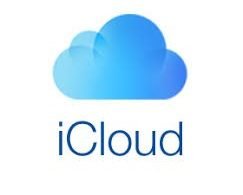There are multiple ways to improve your mac’s speed. If you have been struggling with the problem lately, there is no need to think that replacing the current computer with a new one is the only option.
Sure, there are people who would not have any problems spending their money, but not everyone can afford it. Instead of looking to buy another computer, look for ideas that will make things better with what you have right now. And this article is an excellent way to start.
Tip #1 – Free up Disk Space
Lack of disk space can get out of hand, especially for those who have switched from a personal computer. Mac disks do not offer that much space, to begin with, and it can be hard to fit everything you want. Here are some ideas to free up disk space:
- Get rid of applications that you have not used for a while. They can be reinstalled later.
- Remove junk files like caches, old backups, or app plugins by using a cleanup utility tool.
- Transfer files to clouds or external storage devices.
- Subscribe to streaming services, so you do not have to keep large media files on the computer.
- Delete old downloads and email attachments.
Tip #2 – Scan for Malware and Viruses
In the age of information, we leave traces of our data on the internet all the time. And to ensure privacy, people are starting to make more use of services like VPN. Of course, there are other ways to feel safer when using the internet and computer.
A reliable anti-malware tool gives peace of mind. In case you have not used one, the chances are that you have malware or virus present on the Macbook. And an infestation of malware or viruses could lead to a lot of problems, and in some cases, the only solution could be to reinstall the OS. And even then, a lot of information would be lost.
Tip #3 – Look for Resource-Hungry Processes
Activity Monitor lets you sort applications by memory and CPU usage. Pay the most attention to the ones at the top of the list. Sure, there will be apps that cannot be removed, but you should still be able to find ways to improve the situation.
For instance, if your current web browser is using way too much memory, consider reducing the number of tabs you have open, as well as removing extensions and add-ons that offer no value. As an alternative, you can install and try another browser.
Finally, any applications that are running in the background and are not in use or provide something valuable (like anti-virus) should be shut off.
Tip #4 – Turn off Visuals
Visuals should be gone if you are going for the most efficient route and want to boost the Macbook’s speed.
Go to the Dock. The window will have settings below. Untick the boxes from these two – “Automatically hide and show the Dock” as well as “Animate opening applications.” You can also disable “send” and “receive” animations of the Mail app, and shut off Launchpad effects.
Tip #5 – Declutter Desktop
Do not turn your desktop into a mess by putting every file there. It may be convenient to access and find files faster. However, when you think about resource consumption, it would be much better to organize your data and transfer it to another location.
Each time you switch between the desktop and another window, every icon is rendered. And when you do that multiple times throughout the day, it does not look good for the overall efficiency of the Macbook’s resource use.
Tip #6 – Update the OS
Apple adds new features with each macOS update. But there are also a lot of bug fixes and stability improvements that are not always mentioned in the update notes.
Whenever there is a new update for the OS, make sure to install it at your earliest convenience. It is possible that an improved version of the macOS will solve the issue of having an underperforming laptop.
Tip #7 – Clean Dirt and Dust
If the computer is overheating even when the room temperature is normal, it may be that you have a dust and dirt problem. Regularly cleaning the filth inside should be part of your routine.
Neglecting to take care of the dirt and dust that accumulates over time will lead to internal hardware damages. Every part of the computer should be in optimal condition. Otherwise, do not be surprised that your Macbook feels so sluggish.
Tip #8 – Stop Memory Leaks
There is no easier method to prevent memory leaks than by regularly restarting the computer. Although some may not be that keen due to how long it takes for the system to load after each restart.
If that is the case with your laptop as well, go to System Preferences, select on Groups & Users, and log in your profile. There will be a login item list with applications that start together with the computer every time. Trim that list so that you no longer have to wait.
Tips are Guaranteed
To sum it all up, users who have been looking to speed up their Macbooks will find the tips above to be of great use. And remember that the more of these tips you implement in your Macbook maintenance routine, the better the computer will perform.








